Buying a home in Florida can be exciting, but it’s essential to understand the rules that come with it. One of the most significant parts of purchasing a home is the down payment, which is the money you pay upfront before getting your loan.
Florida’s down payment guidelines help explain how much you need and what kind of help you might get.
These guidelines can change depending on the type of loan you choose. Some loans, like FHA or VA, may need less money down than others. Florida also offers special programs to help first-time homebuyers and people with lower incomes.
These programs might give you money to help with your down payment or closing costs, which can make buying a home easier.
Learning about Florida’s down payment guidelines is a smart way to get ready to buy. Knowing what’s required helps you plan your budget and feel more confident. Whether you’re buying your first home or your next one, understanding these steps can help you move forward with less stress and more success.
Key Takeaways
- FloriFloriFlorida’s sent ranges from 0% for VA/USDA loans to 3.5% for FHA and 3% for conventional loans.
- Median down payment in Florida dropped to $27,566 in early 2024, influenced by location and market trends.
- Assistance programs like FL Assist offer up to $10,000, and Hometown Heroes provides up to $35,000 for eligible buyers.
- Higher down payments (20 %+) eliminate PMI on conventional loans, reducing overall costs.
- Loan terms improve with larger down payments, lower interest rates, and monthly payments.
Overview of Down Payment Basics in Florida
Starting on the path of homeownership in Florida begins with understanding the critical role of a down payment. This upfront payment, a percentage of the home’s value, is pivotal in shaping mortgage terms and financial planning. For those seeking to join the Florida homeowners community, knowing the down payment requirements for the house is crucial.
The amount, typically ranging from 3.5% to 20%, influences loan balances, monthly payments, and interest rates. Loan types like FHA, VA, USDA, and conventional each have specific minimums, often affected by credit scores and debt-to-income ratios. Additionally, a higher down payment, such as 20%, can eliminate the need for Private Mortgage Insurance (PMI requirement), saving buyers from extra monthly costs.
A solid grasp of these basics enables aspiring buyers to navigate lender policies and property-specific standards, laying a strong foundation for achieving their dream of homeownership in the Sunshine State.
Average Down Payment Trends Across the State
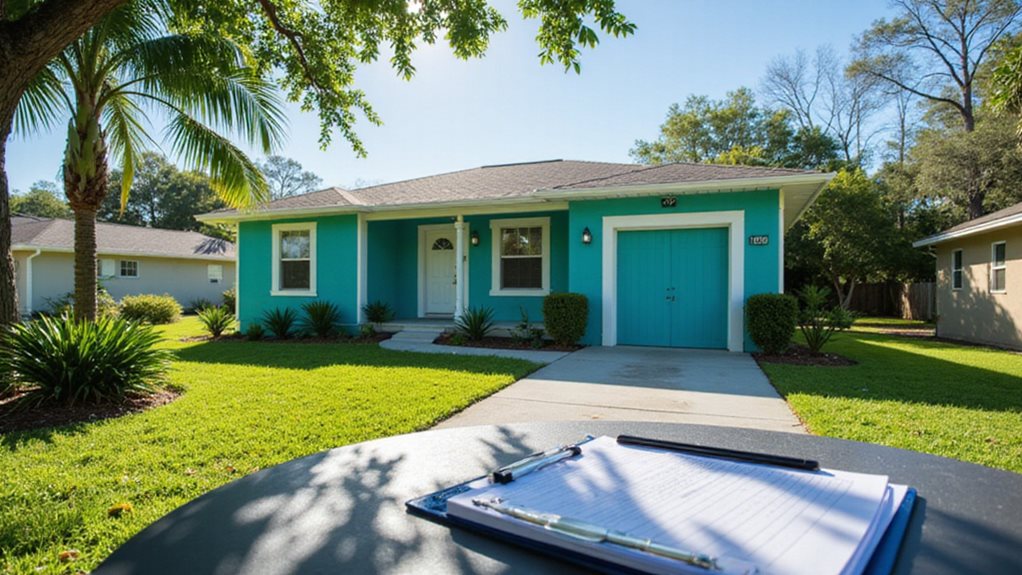
Across Florida, average down payments for homes typically range from 10% to 20% of the purchase price, though variations exist based on buyer profiles and data sources. Initial-time buyers often contribute smaller percentages, averaging between 3% and 12%, frequently aided by assistance programs. Furthermore, regional differences highlight disparities, with higher payments in costly markets like Miami compared to more moderate areas such as Orlando or Tampa.
For instance, in Miami, where home prices often exceed $500,000, down payments can reach 20% or more.
Statewide Down Payment Averages
In Florida, the typical down payment for home purchases generally falls within a range of 10% to 20% of the property as of 2025, aligning closely with or slightly below the national average of approximately 12% to 14.5%. Recent trends show a notable decline, with the median down payment dropping 24% year-over-year to $27,000 in Q3 2024, reflecting softer market conditions and increased inventory.
This significant drop positions Florida among the states with the largest decreases in down payment amounts over the past year.
Factors like location, with higher prices in areas like Miami, and loan types, ranging from 0% for VA/USDA to 3.5% for FHA, influence these amounts. For many in the homebuying community, understanding homebuyer ages and trends offers a sense of connection and clarity when managing this significant financial step.
First-Time Buyer Trends
Exploring the Florida housing market as an initial-time buyer reveals notable trends in down payment practices. Many first-time buyers in Florida opt for low down payments, averaging around 7%, considerably less than the commonly assumed 20%. Programs like FHA loans, requiring as little as 3.5%, and conventional options at 3%, make homeownership accessible.
Furthermore, Down Payment Assistance (DPA) programs from the Florida Housing Finance Corporation support buyers with grants and loans. In Q4 2024, the average down payment for first-time buyers at the 30th percentile was $8,200.
Key options include:
- FL Assist, offering up to $10,000 as a deferred loan.
- Hometown Heroes, providing up to $35,000 for frontline workers.
- FL PLUS, a forgivable loan covering 3-5% of the purchase price.
These resources foster a sense of community, helping newcomers achieve the dream of owning a home.
Regional Payment Variations
A closer look at Florida’s set reveals significant regional variations in down payment trends. Statewide, the average down payment ranges from 10-20%, with a median of $98,670 in Q3 2023, though it dropped to $27,566 by early 2024. South Florida, especially Miami, sees higher averages due to luxury markets, with implied down payments around $100,000 for homes over $500,000.
Central Florida, like Orlando, offers a more balanced market, with down payments near $35,000 for homes around $350,000. North Florida and the Panhandle, including Jacksonville, often have lower median home prices, resulting in smaller down payments. Factors such as high cash purchases and cooling demand further influence these regional differences, shaping Florida’s buying landscape for aspiring homebuyers.
Additionally, the state’s down payment reflects its status as a desirable location with elevated housing costs.
Down Payment Requirements for Conventional Loans
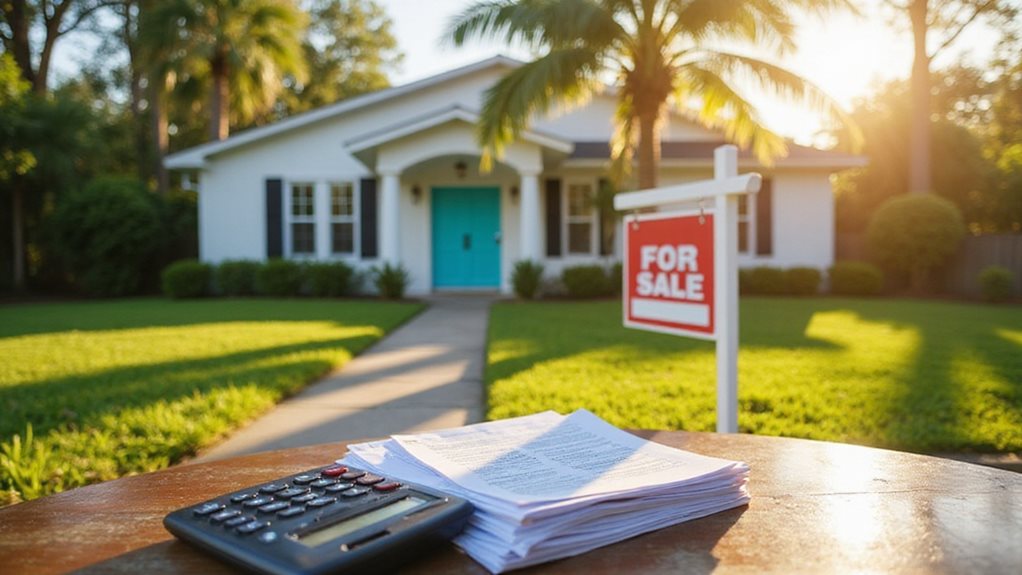
Exploring the landscape of conventional loans in Florida reveals a structured set of down payment requirements tailored to diverse borrower profiles and property types. For many, the path to homeownership begins with a minimum 3% down payment on fixed-rate loans, while adjustable-rate mortgages often require 5%. Initial-time buyers may access 3% down programs, whereas others typically need at least 5%.
Additionally, condos in Florida can also qualify for these same low down payments.
Key considerations include:
- Property Type Impact: Primary residences often qualify for 3-5% down, while secondary homes need 10% and investment properties 20-25%.
- PMI Necessity: Down payments below 20% usually require Private Mortgage Insurance, protecting lenders.
- Credit and DTI Factors: Scores below 620 or high debt-to-income ratios may demand larger down payments.
Understanding these guidelines helps borrowers join Florida’s ownership community.
Guidelines for FHA Loan Down Payments
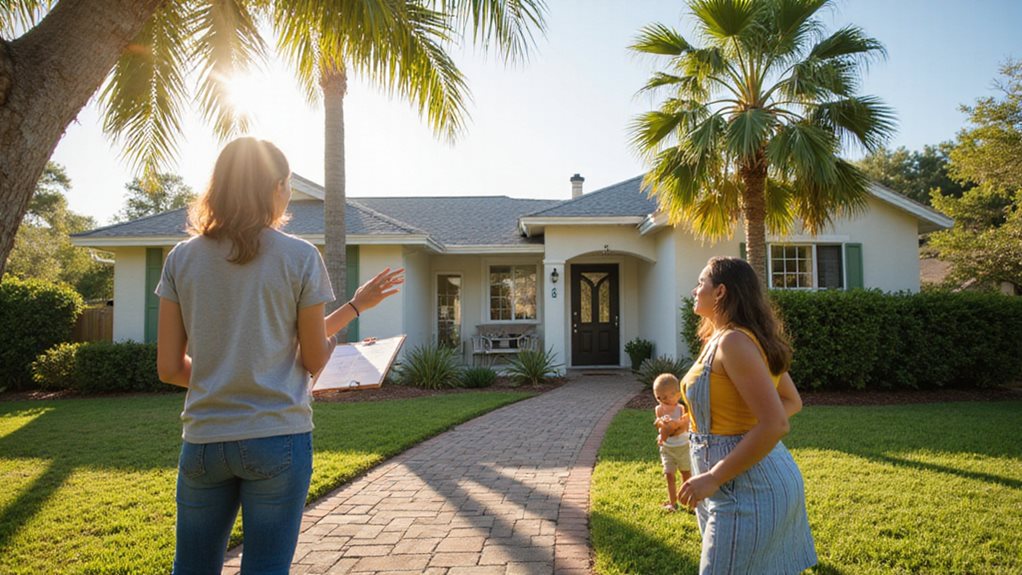
Exploring the domain of FHA loan down payments in Florida reveals a framework designed to facilitate homeownership with accessible requirements. For those with a credit score of 580 or higher, a minimum down payment of 3.5% applies. In comparison, scores between 500 and 579 require 10%. Funds can come from own savings, family gifts, or Florida Housing Finance Corporation assistance programs like FL Assist, offering up to $10,000.
It’s important to note that FHA loans are insured by the Federal Housing Administration, providing flexible guidelines for borrowers.
Below is a concise overview of key FHA guidelines:
| Aspect | Requirement | Detail |
|---|---|---|
| Minimum Down Payment | 3.5% | Credit score 580+ |
| Down Payment (Low Score) | 10% | Credit score 500-579 |
| Assistance Programs | Up to $10,000 | Via FL Assist or similar |
Benefits of VA Loans for Eligible Buyers
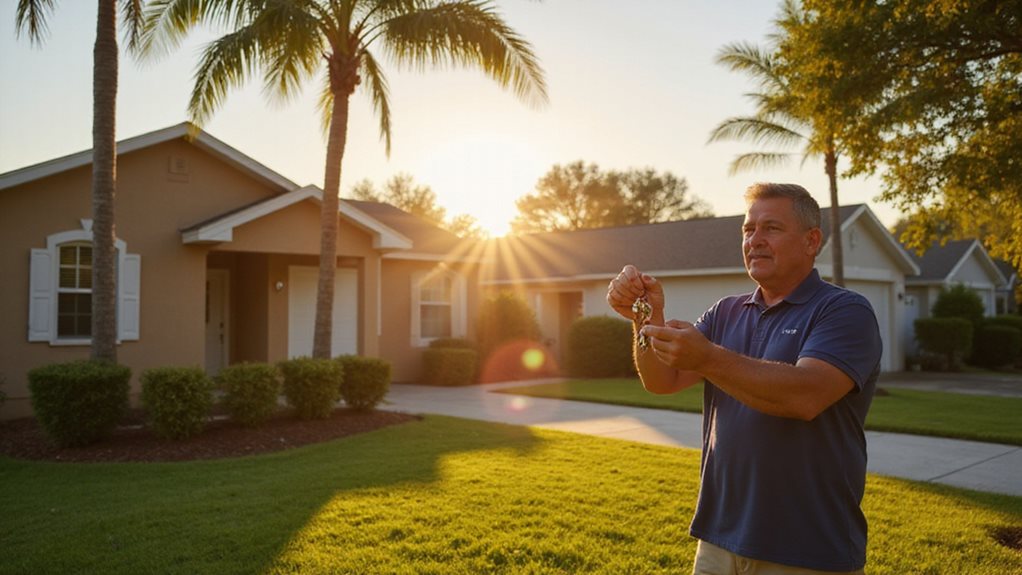
How can eligible buyers in Florida secure homeownership with minimal financial barriers? VA loans offer a powerful solution for veterans, active-duty service members, and qualifying spouses. These loans eliminate the need for a down payment, making homeownership accessible without the burden of saving large sums upfront.
Furthermore, they come with competitive interest rates and no private mortgage insurance, reducing monthly costs. Additionally, VA loans can be used multiple times, allowing buyers to purchase new primary residences as needed.
Key advantages include:
- Zero Down Payment: Purchase a home with no initial investment.
- No PMI: Save on monthly expenses compared to other loan types.
- Lower Interest Rates: Benefit from rates often 0.5% to 1% below conventional loans.
With relaxed credit requirements and reusable benefits, VA loans welcome eligible buyers into the Florida housing community with ease.
Exploring USDA Loans for Rural Properties

For those considering homeownership in Florida’s suburban areas, USDA loans offer a distinctive opportunity through government-backed mortgages designed for low-to-moderate income buyers. A standout feature is the zero down payment option, enabling eligible purchasers to secure 100% financing and preserve savings for other expenses. To qualify, applicants must meet specific criteria, including income limits tied to the area median income and property location within USDA-designated eligible zones.
Additionally, these loans are accessible in various regions, such as Osceola and Polk Counties, ensuring broader opportunities for potential homeowners.
USDA Eligibility Criteria
The USDA loan program offers a valuable opportunity for homebuyers seeking properties in rural and some suburban areas of Florida. Designed to support those in less urbanized regions, it sets specific eligibility criteria for properties and borrowers. Properties must be in USDA-defined rural regions, often with populations under 35,000, covering about 80% of Florida.
Borrowers must meet income limits, not exceeding 115% of the area median income, and demonstrate a stable employment history. Additionally, this program allows for 101% financing, meaning no down payment is required if the home’s value covers the loan and closing costs.
Key eligibility factors include:
- Property must be a primary residence, meeting HUD minimum standards for safety and functionality.
- Borrower household income must align with county-specific limits, often ranging from $110,650 to $164,750 in Florida.
- Credit history should show reliability, with most lenders preferring a FICO score of 620 or higher.
Zero Down Benefits
Why settle for hefty down payments when USDA loans offer a remarkable alternative for rural homebuyers in Florida? These loans, backed by the government, require no down payment, financing up to 101% of a home. This eliminates a significant barrier, particularly for first-time buyers or those with limited savings, freeing up funds for other expenses like closing costs or improvements.
Moreover, USDA loans improve affordability with competitive fixed rates and lower mortgage insurance costs compared to FHA or conventional options. Closing costs can often be rolled into the loan or covered by seller contributions up to 6%. With over 80% of Florida’seligible population, this program welcomes many into the homeownership community, fostering rural development and belonging.
Additionally, USDA loans are specifically designed for properties in eligible rural areas, making them a perfect fit for those looking to settle outside urban centers.
Impact of Down Payment Size on Mortgage Terms

Understanding the impact of down payment size on mortgage terms is crucial for prospective homebuyers in Florida. A larger down payment often reduces the loan principal, lowering lender risk and potentially securing better interest rates. It also decreases the loan-to-value (LTV) ratio, which lenders view favorably, often leading to improved loan conditions. Furthermore, down payment size influences total interest paid and monthly payments, shaping affordability.
Additionally, a substantial down payment can help avoid the added cost of mortgage insurance, which is often required for down payments less than 20%.
Grasping how down payment size affects mortgage terms is vital for Florida homebuyers, impacting interest rates, loan conditions, and overall affordability.
Key impacts include:
- Lower Interest Rates: Higher down payments can secure reduced rates, saving money over time.
- Better Loan Terms: A lower LTV ratio may result in more favorable terms.
- Increased Approval Odds: Demonstrating financial stability through a larger down payment can increase approval chances.
Navigating these factors helps buyers join Florida’s community.
Understanding Private Mortgage Insurance Rules
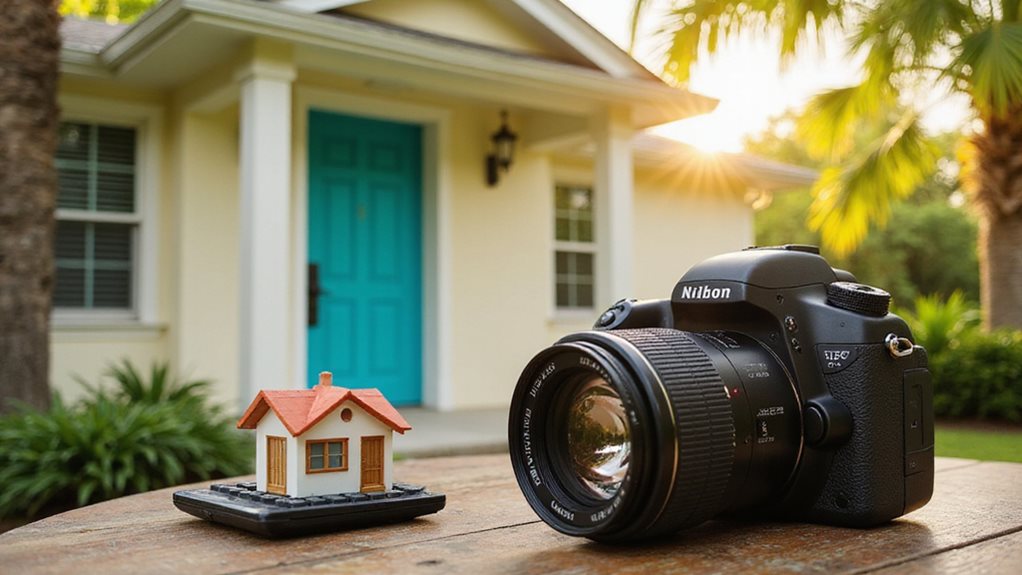
For homebuyers in Florida, handling the financial aspects of purchasing a property and grasping the rules surrounding Private Mortgage Insurance (PMI) becomes a key consideration, especially after evaluating the effects of down payment size on mortgage terms. PMI, required for conventional loans with less than 20% down, protects lenders if borrowers default, enabling financing with smaller initial payments. Costs, typically 0.5% to 1.86% of the loan amount annually, vary based on factors like credit score and down payment size.
Under the Homeowners Protection Act, PMI can be canceled at an 80% loan-to-value ratio upon request or automatically terminates at 78%, provided payments are current. Additionally, PMI facilitates homeownership by allowing buyers to purchase properties sooner with smaller down payments. Understanding these federal rules, applicable in Florida, enables buyers to navigate mortgage obligations confidently within their community.
Statewide Down Payment Assistance Options

Traversing the path to homeownership in Florida often involves exploring statewide Down Payment Assistance (DPA) options designed to ease the financial burden of upfront costs. These programs, usually targeting first-time buyers, provide funds as grants or loans to cover down payments and closing costs, making the dream of owning a home more attainable for many.
Key aspects of Florida’s options
- Income Limits: Eligibility often depends on household income relative to the county Area Median Income (AMI).
- Education Requirement: Most programs mandate completion of a HUD-approved homebuyer course.
- Property Use: Funds are typically restricted to primary residences like single-family homes or condos.
- Assistance Amounts: Funding varies based on income levels, with higher allocations for very low-income buyers.
Details of Florida Housing Finance Corporation Programs
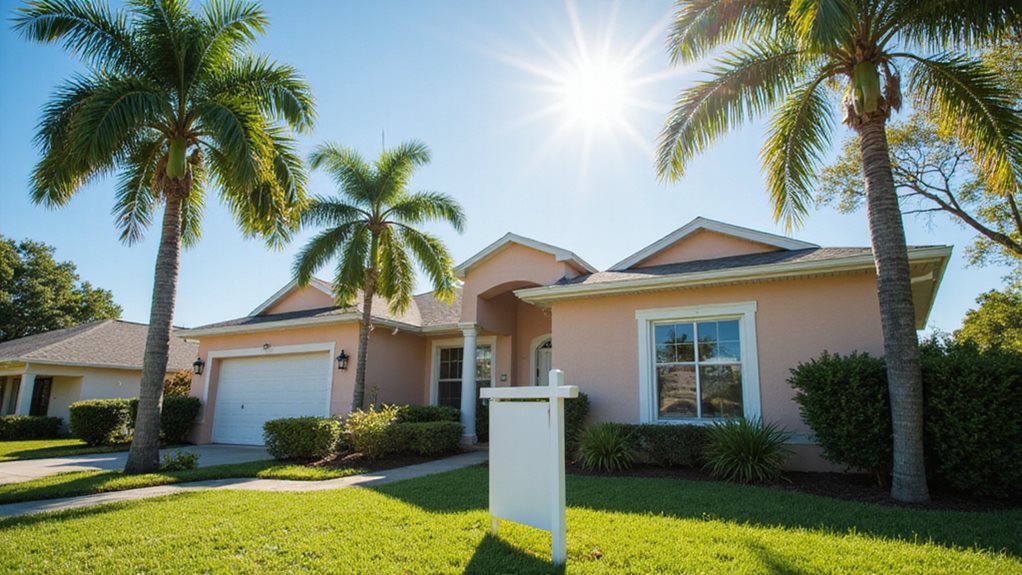
Many prospective homebuyers in Florida turn to the Florida Housing Finance Corporation (FHFC) for robust support in overcoming the financial hurdles of purchasing a home, building on the foundation of statewide down payment assistance options. FHFC offers programs like the Initial Time Homebuyer Program with fixed-rate mortgages and down payment assistance (DPA) through subordinate mortgages such as Florida Assist, FL HLP, and HFA Preferred/Advantage PLUS, each with distinct terms like deferred payments or forgiveness. Additionally, these programs often require completion of a homebuyer education course to ensure buyers are well-prepared for the responsibilities of homeownership.
| Program | Key Feature |
|---|---|
| Florida Assist | Up to $10,000, 0% interest |
| FL HLP | Up to $10,000, 3% rate, 15 years |
| HFA PLUS | 3-5% of the loan, forgivable over 5 years |
These initiatives welcome buyers into homeownership with tailored financial solutions.
Local and City-Specific Assistance Initiatives

Across Florida, local governments and housing authorities utilize State Housing Partnership Funds to support homebuyers through targeted down payment assistance programs. In Tampa, the “Dare to Own the Dream” initiative offers up to $50,000 as a 0% silent secondary mortgage, with amounts varying based on area median income and forgiveness after 20 years of owner occupancy. Furthermore, county-level variations, such as those in Hillsborough and Pasco, provide unique assistance options tailored to income limits and property requirements, reflecting diverse local needs.
State Housing Partnership Funds
The State Housing Initiatives Partnership (SHIP) program, established in 1992 under the William E. Sadowski Affordable Housing Act, offers an essential resource for Floridians seeking affordable homeownership. Administered by the Florida Housing Finance Corporation, SHIP distributes funds to all 67 counties and over 55 entitlement cities, ensuring a minimum allocation of $350,000 per local government. These funds support down payment assistance, rehabilitation, and new construction, fostering community partnerships.
Key aspects of SHIP include:
- At least 65% of funds must support homeownership activities.
- A minimum of 75% is dedicated to construction-related efforts.
- At least 30% is reserved for very-low-income households.
Through local housing assistance plans, SHIP enables communities to create tailored solutions, helping residents achieve the dream of homeownership together.
Tampa’s Dare to Dream Details
One of Tampa’s top support programs for homebuyers is the “Dare to Win the Dream” (DARE) program. Run by the City of Tampa and its Housing & Community Development Division, DARE provides down payment assistance loans of up to $50,000. These loans are based on income and come with 0% interest. They’re also deferred and act as a silent second mortgage, completely forgivable after 20 years of living in the home.
Eligibility targets initial-time buyers with household incomes below 140% of Area Median Income, a minimum credit score of 600, and a $2,000 individual investment. Properties must be within Tampa city limits, with a maximum price of $450,000. Applicants must engage approved counseling agencies and complete homebuyer education, fostering a supportive path to homeownership for the community.
County-Level Assistance Variations
Beyond Tampa, Florida’s cities implement a range of housing assistance initiatives, often tailored to regional needs through the State Housing Initiatives Partnership (SHIP) Program. Administered by the Florida Housing Finance Corporation, SHIP allocates funds to all 67 counties and over 50 cities, supporting down payment assistance, rehabilitation, and new construction for affordable housing. Local Housing Assistance Plans guarantee that strategies meet community demands.
Variations in aid include:
- Miami-Dade County offers up to $35,000 as deferred loans for first-time buyers.
- Broward County provides up to $80,000 with forgivable terms after 15 years.
- Seminole County assists with up to $145,000 based on income and need.
These programs foster homeownership, welcoming residents into supportive Florida communities.
Using Gift Funds for Your Home Purchase

How can prospective homebuyers in Florida utilize financial assistance from loved ones to secure their dream home? Gift funds offer a valuable path for many aspiring homeowners to join the community of property owners. These funds, often provided by immediate family, domestic partners, or fiancés, can cover down payments for primary residences under conventional loans, as long as donors have no interest in the transaction.
To guarantee compliance, a signed gift letter detailing the donor’s information, gift amount, and statement of no repayment expectation is required. Lenders also mandate documentation like bank statements or wire receipts to verify the transfer. By leveraging such support, buyers in Florida can confidently take steps toward homeownership within a supportive network.
Minimum Borrower Contributions Explained
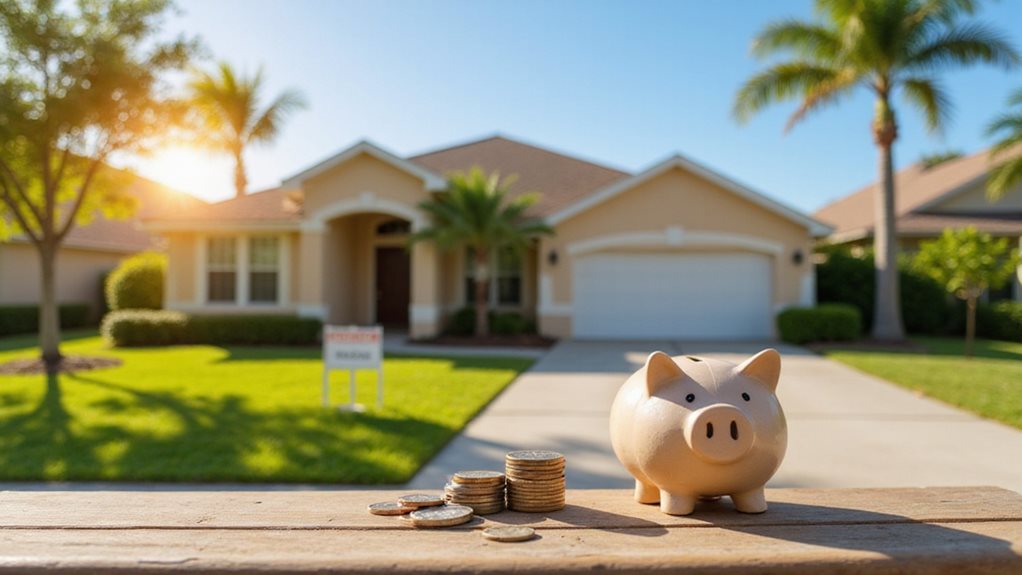
Maneuvering the landscape of home financing in Florida requires an understanding of minimum borrower contributions, which vary considerably by loan type. Knowing these requirements is key for aspiring homeowners who want to join the community of property owners. Conventional loans often start at 3% down for new buyers, while FHA loans require at least 3.5% for credit scores of 580 or higher.
VA and USDA loans, however, may allow 0% down, welcoming veterans and rural buyers with open arms.
Key variations include:
- Conventional: 5% minimum for multi-unit primary residences.
- FHA: 10% down if credit score is 500-579.
- VA: Down payment possible in joint loan scenarios.
These guidelines, influenced by credit and loan choice, pave the path to homeownership in Florida.
Planning for Closing Costs Alongside Down Payments
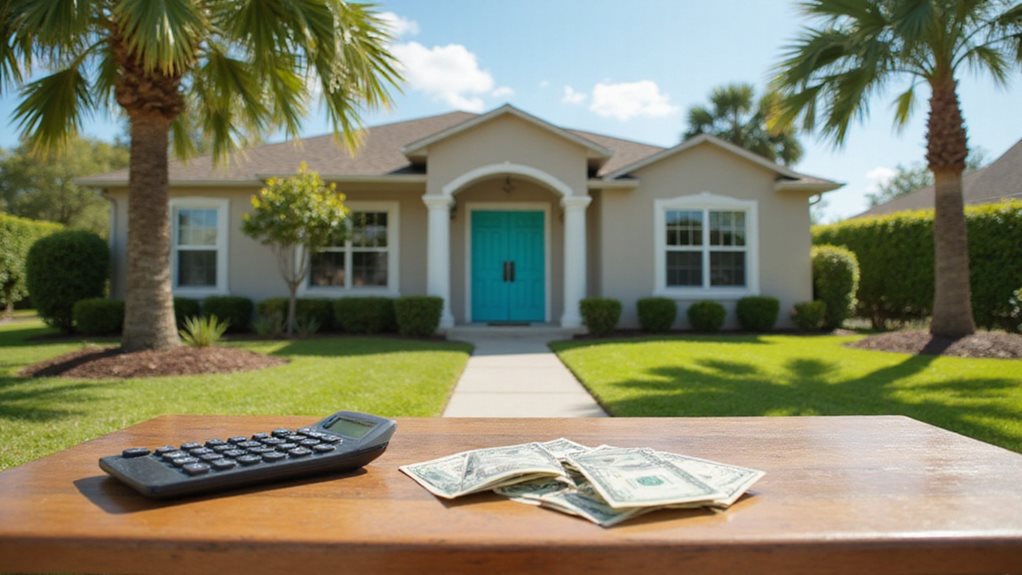
When planning to purchase a home in Florida, buyers must carefully estimate closing costs, which typically range from 2-5% of the purchase price, alongside their down payment. Budgeting for both expenses is crucial, as these combined costs can significantly impact the total funds needed at settlement. Furthermore, exploring Florida-specific homebuyer assistance programs can provide valuable support in covering these expenses, easing the financial burden for eligible buyers.
Estimating Closing Costs
The homebuying process in Florida requires an understanding of closing costs, which are separate from the down payment and represent extra expenses paid at the settlement of the transaction. These costs typically range from 2% to 5% of the home’s average, averaging 2.3% in Florida, or about $9,416 for a median-priced home of $409,400—factors. Factorization, loan type, and purchase price influence the total.
To estimate costs accurately, buyers can rely on valuable resources such as:
- Online calculators from Zillow or lender sites for quick estimates.
- Lender-provided Loan Estimates detailing fees after the mortgage application.
- Title company quotes for specific settlement and insurance costs.
Being prepared for these expenses guarantees a smoother path to homeownership.
Budgeting for Both
Florida homebuyers must recognize that preparing for a home purchase involves more than just estimating closing costs; it requires a thorough approach to budgeting for both closing costs and down payments. These upfront costs—down payments varying by loan type and closing costs ranging from 2% to 5% of the purchase price—are crucial to secure a home. A unified savings strategy is key, integrating clear goals for both expenses into a detailed budget.
Automating savings into dedicated accounts and trimming non-essential spending can help. Beyond the basics, buyers must account for prepaid costs like taxes and insurance, plus post-closing costs like moving expenses. With diligent planning, buyers join a community of prepared homeowners ready for this significant milestone.
Assistance Program Impact
Buying a home in Florida can feel like a big step, especially when it comes to saving money for the down payment. Thankfully, some programs can help. These are called assistance programs, and they give you money to help cover your down payment and closing costs.
This means you don’t have to save as much before buying your home. Understanding how these programs work is an integral part of learning about House Down Payment Requirements Florida.
One helpful program is Florida Assist, which offers up to $10,000 in loans with no interest. Another program, Hometown Heroes, offers up to $35,000 for workers like teachers, nurses, and police officers. These programs make it easier for people to buy a home without waiting years to save up a sizeable down payment.
Many people in Florida use these programs to meet the down payment rules and get into a home faster.
These assistance programs can make a big difference. Instead of coming up with the full down payment by yourself, you can get help from the state. This is especially helpful for first-time buyers who haven’t had much time to save. By learning about House Down Payment Requirements Florida and these support programs, more families can move from renting to owning. It’s a big goal—but one that’s more reachable than you might think.
Frequently Asked Questions
What Role Do Florida’s Down Payment Guidelines Play in FHA Loan Approval?
Florida’s Down Payment Guidelines directly shape the minimum cash needed for FHA loans, typically setting the bar at 3.5% for qualified buyers. These guidelines also outline acceptable sources for down payment funds, such as gifts or grants, impacting buyer eligibility and financial planning.
What Role Do Florida’s Guidelines Play in FHA Loan Approval?
Florida’s Guidelines directly shape the minimum cash needed for FHA loans, typically setting the bar at 3.5% for qualified buyers. These guidelines also outline acceptable sources for down payment funds, such as gifts or grants, impacting buyer eligibility and financial planning.
How Do Property Taxes Affect Down Payment Planning?
Property taxes, averaging 0.82% in Florida, substantially influence down payment planning. They increase cash needs at closing for escrow funding, reducing funds available for the down payment, impacting buyers’ real estate strategy.
Can Down Payments Be Negotiated With Sellers?
Due to lender requirements, direct negotiation of down payments with sellers is typically not possible. However, seller concessions for closing costs can indirectly assist buyers financially.
What Are Down Payment Requirements for Investment Properties?
When maneuvering the financial landscape of investment properties, one finds that down payment requirements often start at a substantial 15% for conventional loans, escalating to 25% for multi-unit dwellings, influenced by credit and lender policies.
How Do Condo Purchases Impact Down Payment Rules?
Condo purchases often significantly influence down payment rules. Due to stricter lender guidelines and project approval standards, condos typically require higher down payments than single-family homes, particularly for non-warrantable projects or investment properties.
Are There Down Payment Differences for New Constructions?
Down payment differences for new construction often require higher percentages, ranging from 5% to 20% or even 20-25% for construction loans. Builder deposits may also apply, fostering community investment and commitment.
Conclusion
Florida offers many choices for homebuyers, from low down payments with VA loans to exceptional help through local assistance programs. In 2024, the average down payment in Florida is about $27,000, showing how home prices and incomes shape the market. By learning the rules for each type of loan and using programs made to help, buyers can prepare wisely for both the down payment and other costs when closing on a home.







